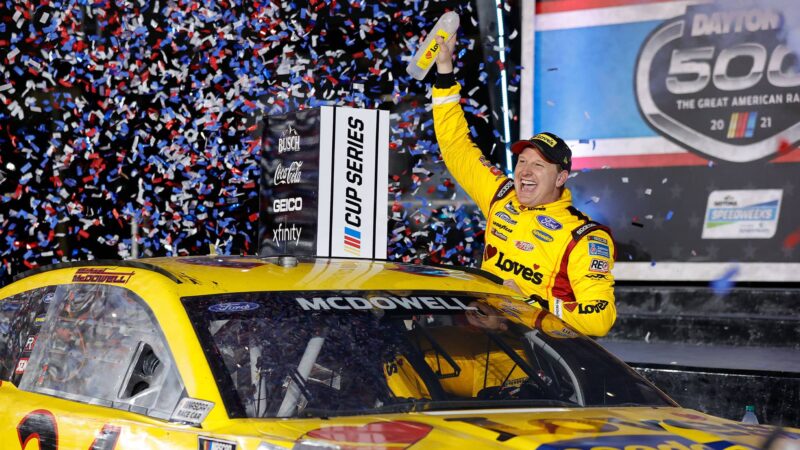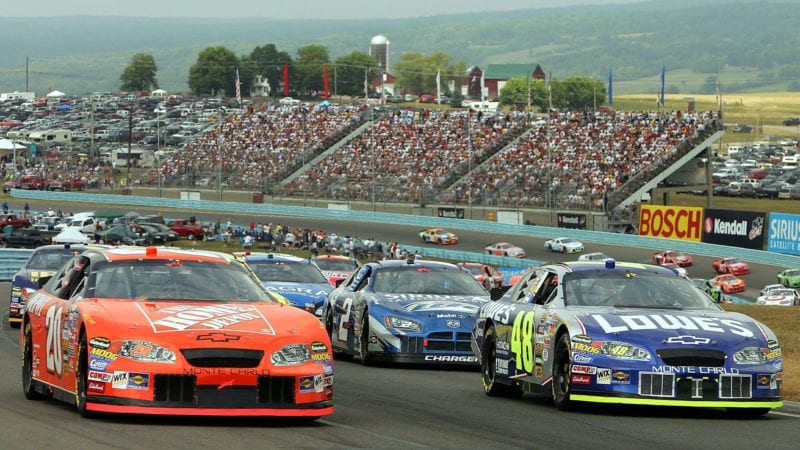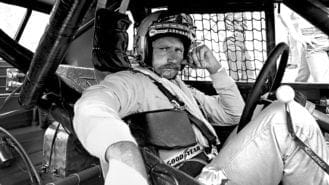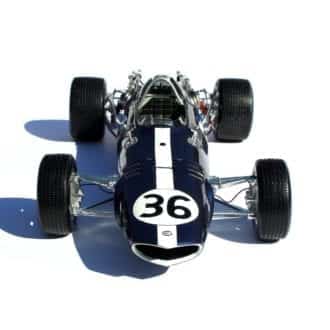A stock car driver on a road course, on the other hand, looks busier than the proverbial one-armed paperhanger – heel-and-toeing while shifting gears through an H-pattern gearbox and sawing heroically at the comically oversized steering wheel as he confronts massive amounts of oversteer, terminal understeer, fading brakes, flat-spotted tires and broiling heat emanating from the front-mounted engine, red-hot exhaust and steel tubing of the chassis.
Which is why I, for one, am thrilled that NASCAR now has no fewer than six road courses on its typically oval-centric schedule. Not because I want the drivers to suffer but because it’s shaking up a sport that’s been running in circles – literally – for far too long.
Road racing has never been part of NASCAR’s DNA. Yes, the series ran at Riverside from the 1960s through the 1980s, but if you check out the grainy footage of those races, you’ll see cars lumbering through the Esses like a getaway Galaxie in a cop show on American TV. By the 1990s, NASCAR made regular stops at Sonoma and Watkins Glen, and guys like Jeff Gordon, Mark Martin and Tony Stewart emerged as road course heroes. But most drivers treated these races as more or less throwaway events.
“Eventually, owners realized they could steal some results by hiring specialists like Dan Gurney”
Eventually, the owners of second-tier teams realized they could steal some results by hiring sports car specialists for one-off rides, just as F1 stud Dan Gurney had cleaned up at Riverside back in the 1960s. Canadian Ron Fellows was the first and statistically most successful of the modern road course ringers, as they were somewhat snarkily dubbed. But the driver who had the biggest impact was Boris Said, who made his debut at the Glen in 1998.
Tall and lanky, with a goatee and loosey-goosey attitude, Said didn’t fit the standard NASCAR template. But his crew sure did. “It was like Days of Thunder,” he recalls. “The crew chief asks me, ‘You like eight-and-a-half-inch upper control arms or nine-and-a-half?’ I’m like, ‘You know I’ve never driven one of these cars before.’”

This year’s Daytona 500 winner Michael McDowell has the best road course pedigree of anyone on the grid
C. Tilton/Getty Images
Everybody else was using practice for simulated qualifying runs. But Said, desperate for seat time, pounded around on spent tires for nearly the entire session. “I was like 38th or 40th. The owner comes on the radio and says with this real Southern accent, ‘Boris, there’s one thing you’re leading in: You got more laps than anybody,’” Said says with a laugh. “I came in and they put new tires on, and I went to second on the board. After that, everything changed for me – respect, everything.”
Besides doing several Cup races a year and scoring a full-time ride in NASCAR’s truck series, Said also forged a lucrative second career coaching stock car drivers during test days on road circuits. He started with the basics like threshold braking, matching revs on downshift and not rolling too much speed into corners. “They’re some of the best drivers in the world,” he says. “So it was like, if you show a duck water, it’s going to swim.”
Said taught his pupils so well he found himself out of a Cup job. (Road course ringers were also hurt by new rules limiting testing, advances in simulator training and better cars and drivers throughout the field.) Right now, the only Cup regular with a road-racing pedigree is Michael McDowell, who raced briefly in Indy cars and won in a Daytona Prototype before finding a home in NASCAR.



